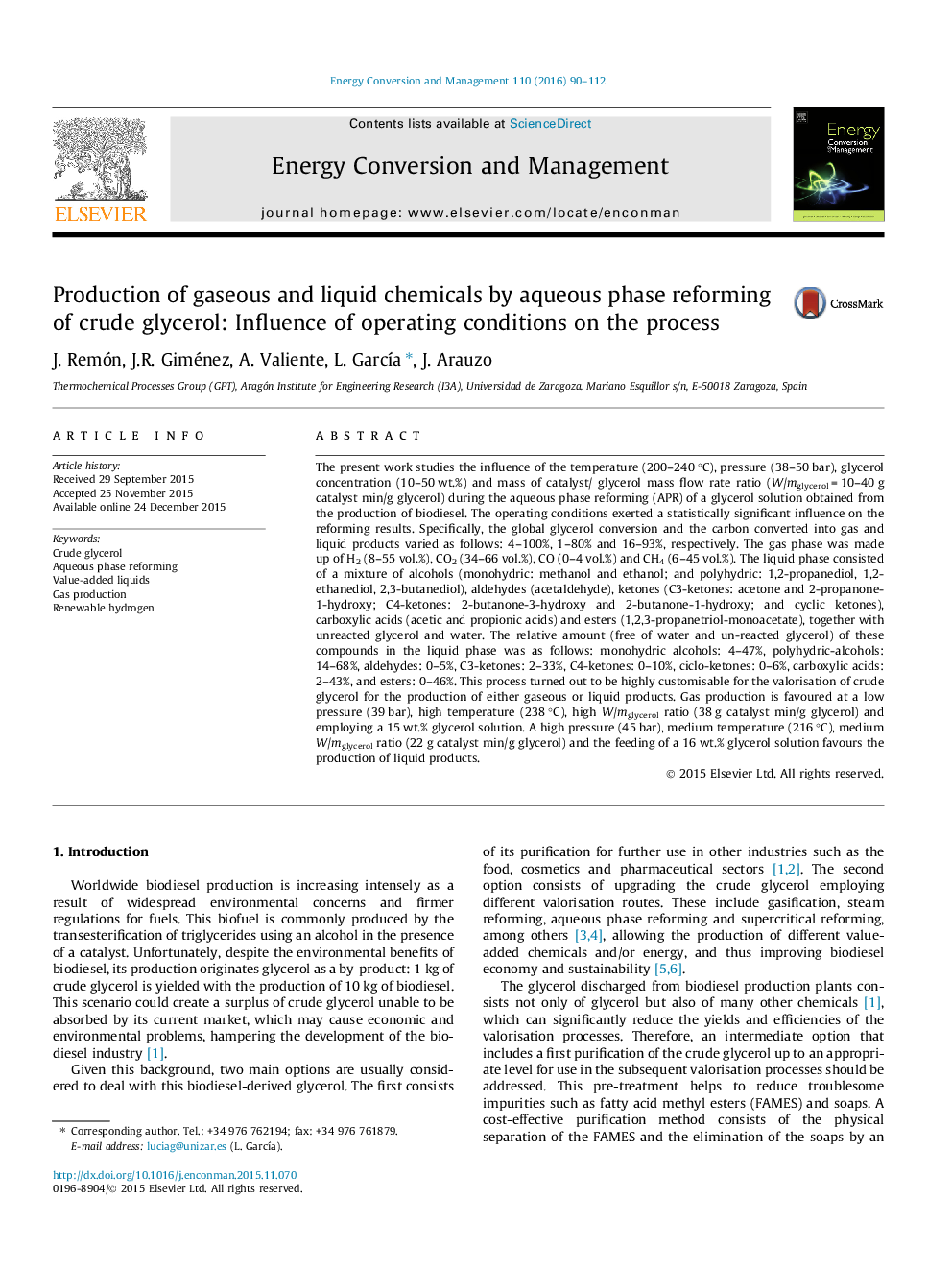| Article ID | Journal | Published Year | Pages | File Type |
|---|---|---|---|---|
| 760366 | Energy Conversion and Management | 2016 | 23 Pages |
•Aqueous phase reforming: a tailor-made process for the valorisation of crude glycerol.•In-depth understanding of the effect of the operating conditions on the process.•Process optimisation for the selective production of valuable gas and liquid products.•Low pressure and high temperature and spatial time favour gas production.•High pressure and medium temperature maximise the production of valuable liquids.
The present work studies the influence of the temperature (200–240 °C), pressure (38–50 bar), glycerol concentration (10–50 wt.%) and mass of catalyst/ glycerol mass flow rate ratio (W/mglycerol = 10–40 g catalyst min/g glycerol) during the aqueous phase reforming (APR) of a glycerol solution obtained from the production of biodiesel. The operating conditions exerted a statistically significant influence on the reforming results. Specifically, the global glycerol conversion and the carbon converted into gas and liquid products varied as follows: 4–100%, 1–80% and 16–93%, respectively. The gas phase was made up of H2 (8–55 vol.%), CO2 (34–66 vol.%), CO (0–4 vol.%) and CH4 (6–45 vol.%). The liquid phase consisted of a mixture of alcohols (monohydric: methanol and ethanol; and polyhydric: 1,2-propanediol, 1,2-ethanediol, 2,3-butanediol), aldehydes (acetaldehyde), ketones (C3-ketones: acetone and 2-propanone-1-hydroxy; C4-ketones: 2-butanone-3-hydroxy and 2-butanone-1-hydroxy; and cyclic ketones), carboxylic acids (acetic and propionic acids) and esters (1,2,3-propanetriol-monoacetate), together with unreacted glycerol and water. The relative amount (free of water and un-reacted glycerol) of these compounds in the liquid phase was as follows: monohydric alcohols: 4–47%, polyhydric-alcohols: 14–68%, aldehydes: 0–5%, C3-ketones: 2–33%, C4-ketones: 0–10%, ciclo-ketones: 0–6%, carboxylic acids: 2–43%, and esters: 0–46%. This process turned out to be highly customisable for the valorisation of crude glycerol for the production of either gaseous or liquid products. Gas production is favoured at a low pressure (39 bar), high temperature (238 °C), high W/mglycerol ratio (38 g catalyst min/g glycerol) and employing a 15 wt.% glycerol solution. A high pressure (45 bar), medium temperature (216 °C), medium W/mglycerol ratio (22 g catalyst min/g glycerol) and the feeding of a 16 wt.% glycerol solution favours the production of liquid products.
